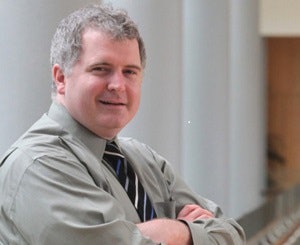 Jeremiah Quinlan, the Yale undergraduate admissions dean, is helping coordinate the outreach to 16,000 high-achieving rising high school seniors from low-income families.
Jeremiah Quinlan, the Yale undergraduate admissions dean, is helping coordinate the outreach to 16,000 high-achieving rising high school seniors from low-income families.Recent high-profile research has shown that direct mail efforts to help low-income students apply for admission to elite colleges and universities can be an effective outreach measure with the potential of leading to greater socioeconomic diversity among undergraduates at competitive institutions.
This summer, Yale University is taking research-based practices and employing them directly to a cohort of high school seniors, many of whom university officials would like to see applying for fall 2014 admission. The school’s undergraduate admissions office has launched an educational campaign to inform low-income families about the affordability of a Yale College education.
In June, the admissions office sent tailored mailings to 16,000 high-achieving rising high school seniors from low-income families. The information pointed out that parents earning $65,000 or less are not asked to make any financial contribution to the cost of their child’s Yale education; the $15,857 average yearly net price for Yale College for all students receiving financial aid; and the online link for a new website where families can compare Yale’s net price to the average net price paid by students receiving financial aid who attend a public university in their home state.
In August, the admissions office will send another mailing to the same 16,000 students that will include instructions for applying to Yale and securing an applications fee waiver.
“Traditionally, we haven’t done the supplemental mailing for these particular students,” said Jeremiah Quinlan, the Yale undergraduate admissions dean.
“We’re doing this in response to the Hoxby-Avery research, which says if these high-achieving students from low-income families who typically don’t apply to selective colleges and tend to be geographically isolated, then direct mailing is one of the most effective ways to reach out to these students,” he explained.
The outreach campaign model derives from the work of Stanford University professor Caroline M. Hoxby, University of Virginia professor Sarah Turner, and Harvard Kennedy School of Government professor Christopher Avery. The three have been working together for several years seeking explanations on why high-achieving, low-income students are less likely to attend very selective colleges and universities than are students from middle- and upper-income families.
Last month in Washington, Hoxby presented findings from a research study she and Turner produced that included results from the Expanding College Opportunities Project. The project focused on providing targeted information about the college application and selection processes and found that the students receiving the customized information were 50 percent more likely to attend a competitive institution than the low-income students who had not gotten the specialized information.
“We will track this cohort to see if [the outreach] intervention is as effective as Hoxby and Avery say that it will be. We will be tracking this internally,” Quinlan said. “This type of effort takes time, but I’m optimistic that we will see a strong response.”
Quinlan explained that since the early 2000s, Yale has made significant efforts to reach out to low-income students, including the move in 2008 to not require financial contributions from students in households making less than $60,000 annually. The school has since raised the amount to $65,000. “We’ve been working on reaching out to low-income students for a very long time,” he said.
Richard Kahlenberg, a senior fellow at the Century Foundation and notable proponent of class-based affirmative action in higher education admissions, said it’s an open question as to whether universities are going to “capitalize on Hoxby’s research because the past track record of selective colleges has been very weak on socioeconomic diversity.”
“The big question in my mind is whether universities will take advantage of these new findings, and it sounds like Yale is taking some steps, which is great,” Kahlenberg said. “I think everyone will look closely to see how effective the Yale initiative will be. It’s innovative, it’s different, and it could be very important.”





















